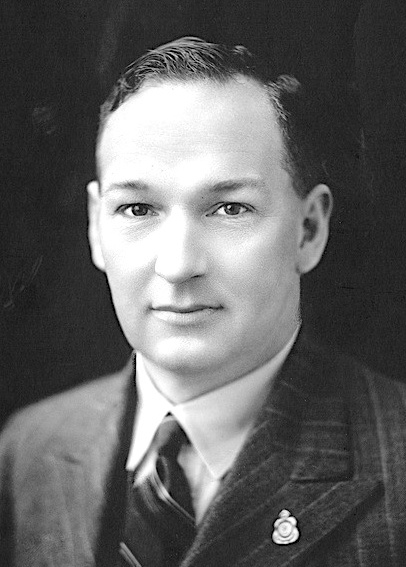|
Protestant People's Party
The Protestant People's Party (PPP) was a minor Australian political party which operated in the state of New South Wales (NSW) in the 1940s. The party contested the 1946 Australian federal election for election to the Senate, in which it gained 7.7% of the vote in NSW (which translated to 3% nationally). This was a particularly impressive result for a minor party at the time, given the strength of the two-party system A two-party system is a political party system in which two major political parties consistently dominate the political landscape. At any point in time, one of the two parties typically holds a majority in the legislature and is usually refe ... in Australia during the 1940s. Nevertheless, the result was insufficient to gain the PPP a parliamentary seat. Three years later, the PPP contested the 1949 Australian federal election, but saw its vote collapse to just 1% of the total NSW Senate vote. The PPP was never successful in winning representation to eith ... [...More Info...] [...Related Items...] OR: [Wikipedia] [Google] [Baidu] |
Glebe, New South Wales
Glebe is an inner-western suburb of Sydney. Glebe is located southwest of the Sydney central business district and is part of the local government area of the City of Sydney, in the Inner West region. Glebe is surrounded by Blackwattle Bay and Rozelle Bay, inlets of Sydney Harbour, in the north. The suburb of Ultimo lies to the east and the suburbs of Annandale and Forest Lodge lie to the west. The southern boundary is formed by Parramatta Road and Broadway. Broadway is a locality sited along the road of the same name, which is located on the border of Glebe, Chippendale and Ultimo. History Glebe's name is derived from the fact that the land on which it was developed was a glebe, originally owned by the Anglican Church. 'The Glebe' was a land grant of given by Governor Arthur Phillip to Reverend Richard Johnson, Chaplain of the First Fleet, in 1790. In the 19th century, Glebe was home to architect, Edmund Blacket, who had migrated from England. Blacket built ... [...More Info...] [...Related Items...] OR: [Wikipedia] [Google] [Baidu] |
Protestantism
Protestantism is a Christian denomination, branch of Christianity that follows the theological tenets of the Reformation, Protestant Reformation, a movement that began seeking to reform the Catholic Church from within in the 16th century against what its followers perceived to be growing Criticism of the Catholic Church, errors, abuses, and discrepancies within it. Protestantism emphasizes the Christian believer's justification by God in faith alone (') rather than by a combination of faith with good works as in Catholicism; the teaching that Salvation in Christianity, salvation comes by Grace in Christianity, divine grace or "unmerited favor" only ('); the Universal priesthood, priesthood of all faithful believers in the Church; and the ''sola scriptura'' ("scripture alone") that posits the Bible as the sole infallible source of authority for Christian faith and practice. Most Protestants, with the exception of Anglo-Papalism, reject the Catholic doctrine of papal supremacy, ... [...More Info...] [...Related Items...] OR: [Wikipedia] [Google] [Baidu] |
Defunct Political Parties In New South Wales
Defunct (no longer in use or active) may refer to: * ''Defunct'' (video game), 2014 * Zombie process or defunct process, in Unix-like operating systems See also * * :Former entities * End-of-life product An end-of-life product (EOL product) is a product at the end of the product lifecycle which prevents users from receiving updates, indicating that the product is at the end of its useful life (from the vendor's point of view). At this stage, a ... * Obsolescence {{Disambiguation ... [...More Info...] [...Related Items...] OR: [Wikipedia] [Google] [Baidu] |
List Of Political Parties In Australia
The politics of Australia has a mild two-party system, with two dominant political groupings in the Australian political system, the Australian Labor Party and the Liberal/National Coalition. Federally, 16 of the 151 members of the lower house (Members of Parliament, or MPs) are not members of major parties, as are 17 of the 76 members of the upper house (senators). The Parliament of Australia has a number of distinctive features including compulsory voting, with full- preference instant-runoff voting in single-member seats to elect the lower house, the Australian House of Representatives, and the use of the single transferable vote to elect the upper house, the Australian Senate. Other parties tend to perform better in the upper houses of the various federal and state parliaments since these typically use a form of proportional representation, except for in Tasmania where the lower house is proportionally elected and the upper house is made up of single member districts. H ... [...More Info...] [...Related Items...] OR: [Wikipedia] [Google] [Baidu] |
1949 Australian Federal Election
The 1949 Australian federal election was held in Australia on 10 December 1949. All 121 seats in the House of Representatives and 42 of the 60 seats in the Senate were up for election. The incumbent Labor Party, led by Prime Minister Ben Chifley, was defeated by the opposition Liberal–Country coalition under Robert Menzies. Menzies became prime minister for a second time, his first period having ended in 1941. This election marked the end of the 8-year Curtin-Chifley Labor Government that had been in power since 1941 and started the 23-year Liberal/Country Coalition Government. This was the first time the Liberal party won government at the federal level. The number of MPs in both houses had been increased at the election, and single transferable vote under a proportional voting system had been introduced in the Senate. Though Labor lost government, Labor retained a Senate majority at the election. However, this ended at the 1951 election. With the Senate changes in place, L ... [...More Info...] [...Related Items...] OR: [Wikipedia] [Google] [Baidu] |
Two-party System
A two-party system is a political party system in which two major political parties consistently dominate the political landscape. At any point in time, one of the two parties typically holds a majority in the legislature and is usually referred to as the ''majority'' or ''governing party'' while the other is the ''minority'' or ''opposition party''. Around the world, the term has different meanings. For example, in the United States, the Bahamas, Jamaica, United Kingdom and Zimbabwe, the sense of ''two-party system'' describes an arrangement in which all or nearly all elected officials belong to either of the two major parties, and third parties rarely win any seats in the legislature. In such arrangements, two-party systems are thought to result from several factors, like "winner takes all" or "first past the post" election systems.Regis PublishingThe US System: Winner Takes All Accessed August 12, 2013, "...Winner-take-all rules trigger a cycle that leads to and stren ... [...More Info...] [...Related Items...] OR: [Wikipedia] [Google] [Baidu] |
Australian Senate
The Senate is the upper house of the bicameral Parliament of Australia, the lower house being the House of Representatives. The composition and powers of the Senate are established in Chapter I of the Constitution of Australia. There are a total of 76 senators: 12 are elected from each of the six Australian states regardless of population and 2 from each of the two autonomous internal Australian territories (the Australian Capital Territory and the Northern Territory). Senators are popularly elected under the single transferable vote system of proportional representation. Unlike upper houses in other Westminster-style parliamentary systems, the Senate is vested with significant powers, including the capacity to reject all bills, including budget and appropriation bills, initiated by the government in the House of Representatives, making it a distinctive hybrid of British Westminster system, Westminster bicameralism and American-style bicameralism. As a result of propor ... [...More Info...] [...Related Items...] OR: [Wikipedia] [Google] [Baidu] |
1946 Australian Federal Election
The 1946 Australian federal election was held in Australia on 28 September 1946. All 74 seats in the House of Representatives and 19 of the 36 seats in the Senate were up for election. The incumbent Labor Party led by Prime Minister Ben Chifley defeated the opposition Liberal–Country coalition, led by Robert Menzies. It was the Liberal Party's first federal election since its creation. This was the first time the Labor party had won a second consecutive election. This was also the last time the Labor party would win a federal election until the 1972 election. The election was held in conjunction with three referendum questions, one of which was carried. Results House of Representatives ---- ;Notes * Independent: Doris Blackburn ( Bourke, Vic.) * In South Australia, the Liberal Party was known as the Liberal and Country League. Senate ---- ;Notes * Of the three senators elected on Liberal–Country joint tickets, two were Liberal Party members and one was a Country ... [...More Info...] [...Related Items...] OR: [Wikipedia] [Google] [Baidu] |
Australia
Australia, officially the Commonwealth of Australia, is a sovereign ''Sovereign'' is a title which can be applied to the highest leader in various categories. The word is borrowed from Old French , which is ultimately derived from the Latin , meaning 'above'. The roles of a sovereign vary from monarch, ruler or ... country comprising the mainland of the Australian continent, the island of Tasmania, and numerous smaller islands. With an area of , Australia is the largest country by area in Oceania and the world's sixth-largest country. Australia is the oldest, flattest, and driest inhabited continent, with the least fertile soils. It is a megadiverse country, and its size gives it a wide variety of landscapes and climates, with deserts in the centre, tropical Forests of Australia, rainforests in the north-east, and List of mountains in Australia, mountain ranges in the south-east. The ancestors of Aboriginal Australians began arriving from south east Asia approx ... [...More Info...] [...Related Items...] OR: [Wikipedia] [Google] [Baidu] |
Apricot (color)
Apricot is a light yellowish- orangish color that is similar to the color of apricots. However, it is paler than actual apricots. Etymology The etymology of the color apricot (and the fruit): the word comes from the Arabic ''Al-birquq'' (itself from Greek ''berikokon'', ultimately from Latin ''praecoquum''). ''Apricot'' has been in use as a color name since 1851. Variations of apricot Light apricot Displayed at right is the light tone of apricot called ''apricot'' since 1958 in Crayola crayons. Mellow apricot Displayed at right is the color ''mellow apricot''. This is one of the colors on the British Standards 5252 color list. This color is #06E50 on the 5252 color list. The 5252 color list is for colors used in color coordination and in building construction. The British Standard color lists were first formulated in 1930 and reached their present form in 1955. Apricot in human culture ;Sexuality * In the bandana code of the gay leather subculture, wearing an aprico ... [...More Info...] [...Related Items...] OR: [Wikipedia] [Google] [Baidu] |
Christianity
Christianity is an Abrahamic monotheistic religion based on the life and teachings of Jesus of Nazareth Jesus, likely from he, יֵשׁוּעַ, translit=Yēšūaʿ, label=Hebrew/Aramaic ( AD 30 or 33), also referred to as Jesus Christ or Jesus of Nazareth (among other names and titles), was a first-century Jewish preacher and religious .... It is the Major religious groups, world's largest and most widespread religion with roughly 2.38 billion followers representing one-third of the global population. Its adherents, known as Christians, are estimated to make up a majority of the population in Christianity by country, 157 countries and territories, and believe that Jesus in Christianity, Jesus is the Son of God (Christianity), Son of God, whose coming as the Messiah#Christianity, messiah was Old Testament messianic prophecies quoted in the New Testament, prophesied in the Hebrew Bible (called the Old Testament in Christianity) and chronicled in the New Testamen ... [...More Info...] [...Related Items...] OR: [Wikipedia] [Google] [Baidu] |
New South Wales
) , nickname = , image_map = New South Wales in Australia.svg , map_caption = Location of New South Wales in AustraliaCoordinates: , subdivision_type = Country , subdivision_name = Australia , established_title = Before federation , established_date = Colony of New South Wales , established_title2 = Establishment , established_date2 = 26 January 1788 , established_title3 = Responsible government , established_date3 = 6 June 1856 , established_title4 = Federation , established_date4 = 1 January 1901 , named_for = Wales , demonym = , capital = Sydney , largest_city = capital , coordinates = , admin_center = 128 local government areas , admin_center_type = Administration , leader_title1 = Monarch , leader_name1 = Charles III , leader_title2 = Governor , leader_name2 = Margaret Beazley , leader_title3 = Premier , leader_name3 = Dominic Perrottet ( Liberal) , national_representation = Parliament of Australia , national_representation_type1 = Sen ... [...More Info...] [...Related Items...] OR: [Wikipedia] [Google] [Baidu] |






